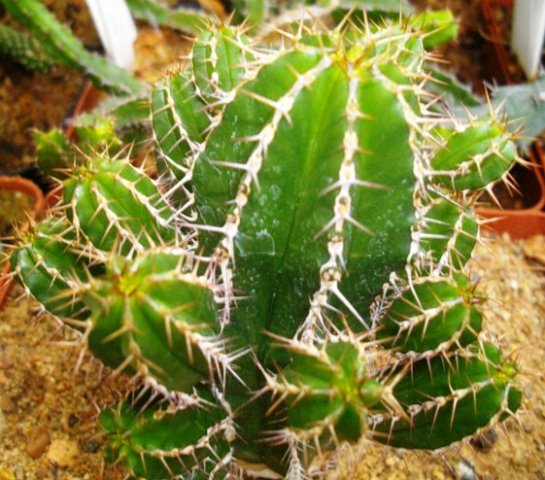Euphorbia echinus

Author: Ivan Lätti
Photographer: Ivan Lätti
Euphorbia echinus is a dwarf spurge of North Africa in countries including Morocco. It may these days be called E. officinarum subsp. echinus. The plant branches much and grows to about 90 cm. The common name of spurge was acquired by some Euphorbia plants in Old English and Old French because of the plants used as purgatives.
The columnar stems have six or seven shallow vertical ridges protected by pairs of hefty spines. The spines are red when young, turning grey or whitish when older. A mature plant will consist of a clump of many erect stems creating a round prickly shrub appearance. These may even become densely stacked in old plants in nature where they grow slowly in arid conditions.
The cyathia or false flowers of this plant are maroon and sometimes yellow, appearing in summer. It is indigenous to inland Morocco and thrives in semi-shade. The plant needs frost protection but is drought resistant. Although the milky latex may be toxic, the plant is also said to be used medicinally in the treatment of ovarian cysts (www.desert-tropicals.com, Wikipedia and www. davesgarden.com).
This young North African plant is one of the occasional inclusions on this Site not occurring in nature in southern Africa. It was found in the greenhouse at the Botanical Garden of the North West University at its Potchefstroom campus (https://www.llifle.com).

